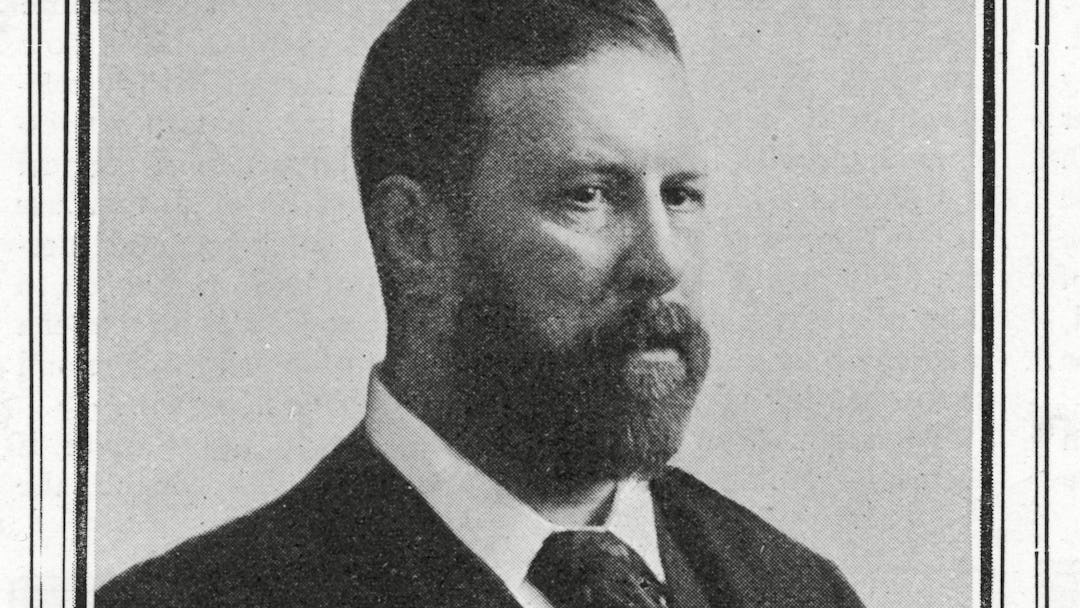In 1897, Bram Stoker popularized the vampire with his gothic horror novel Dracula, inspiring countless interpretations of the undead figure that feasts on the blood of victims. The Irish author’s other works have largely been overlooked, but we’re celebrating the writer’s birthday with a collection of other Stoker tales that deserve your attention. Within these stories, Stoker’s interest in science, drama, and fantasy spring to life and ignite the imagination.
The Lady of the Shroud
Stoker adopted his epistolary approach to Dracula in the 1909 novel The Lady of the Shroud, which is told through letters and diary excerpts. There’s also a vampiric and romantic element, though Lady has a much happier ending than its tragic predecessor. Written during the onset of the Balkan Wars, Stoker tells the tale of young Rupert Saint Leger, who receives a large inheritance after the passing of his uncle — but only if he promises to live in his uncle’s castle for a year. To integrate himself with his neighbors on the Dalmatian coast, he supplies them with weapons so they might defeat the Turkish invaders. During his nights, Rupert is visited by a mysterious woman, the “lady of the shroud,” who may or may not be undead.
The Lair of the White Worm
Ken Russell adapted Stoker’s last novel, The Lair of the White Worm, in 1988. Still weird: the movie starred Hugh Grant. “Every one of Russell’s films has been an exercise in wretched excess. Sometimes it works. Russell loves the bizarre, the gothic, the overwrought, the perverse,” wrote Roger Ebert. “The strangest thing about The Lair of the White Worm is that, by his standards, it is rather straight and square.” Stoker’s reception wasn’t much warmer, but it remains one of his most popular stories after Dracula. It’s based on the legend of the Lambton Worm, which centers on a man’s battle against a massive worm that terrorizes a local village.
Under the Sunset
It’s hard to imagine Stoker’s grim, occasionally plodding style being appropriate for children, but the author penned a collection of stories for young readers in 1881. The eight tales, featuring 33 illustrations by W. Fitzgerald and W. V. Cockburn, were examples of some of the earliest forms of fantasy literature. One of the story titles has jealous Tim Burton written all over it: How 7 Went Mad.
The Primrose Path
As Stoker’s canon dwelled in gothic and romantic territory, melodrama was not far behind. And his first novel The Primrose Path lays it on thick. The story of a kindly, hardworking Irish gent who moves to London in search of a better life is the typical innocent-in-the-big-city-and-corrupted-by-its-evils tale. In this case, alcohol plays a large role in the man’s downfall, which ends with a bloody bang. Serial stories were popular during the time, and Primrose Path was right at home in The Shamrock, an Irish weekly.
Famous Impostors
Stoker wrote extensively about horror, occult, and folkloric subjects, but he was actually quite the skeptic. He favored science and rational thought over paranormal or superstitious beliefs — and in many ways Dracula is an example of the struggle between the two that was present in Victorian England. In his last non-fiction work, Stoker exposed impostors and hoaxes, delving into subjects like magic and witchcraft.
The Mystery of the Sea
In Stoker’s Dracula, Mina Harker represents an element of the “New Woman” — or the progressive 19th-century woman who asserted her independence from male authority. She’s a single, intelligent schoolteacher who works hard to earn a living. Similar conceptions of gender are explored in Stoker’s 1902 novel The Mystery of the Sea — a romantic adventure thriller with a supernatural twist. Mystery’s heroine Marjory Drake is also knowledgeable and somewhat rebellious. She becomes involved with the Spanish-American War, even. But traditional concepts of womanhood abound, which creates an interesting tension. This is one of Stoker’s more complex stories, balancing serious themes with pulpy passages about kidnapping and ciphers.
The Jewel of Seven Stars
“Female vampires in Dracula are [Stoker’s] way of responding to the growing equality of men and women, in particular their sexual equality. Not only does he emphasize their voluptuousness and sexual aggression and contrast their behavior to that of his chaste and sexually timid heroine but he has his male characters destroy these threatening women and reestablish a more traditional order,” writes Carol A. Senf. “As a result, readers — especially those who are also familiar with his treatment of Queen Tera in The Jewel of Seven Stars, Stephen Norman in The Man, and Lady Arabella March in The Lair of the White Worm — quickly conclude that Stoker is critical of sexually liberated women, perhaps of women in general.” But alternate endings of Stoker’s 1903 story The Jewel of Seven Stars, about an ancient Egyptian queen, reveal empowering resolutions for the royal woman. It’s a fascinating exploration of Stoker’s struggle with the New Woman.
Dracula’s Guest
We’re only slightly cheating by adding this entry — Stoker’s posthumously published 1914 short story collection believed to contain the deleted first chapter from the original Dracula manuscript. “Within a few short passages [of Dracula’s Guest], the experiences of English solicitor Jonathan Harker, on business in Europe, change dramatically— particularly when he hears warnings against travelling on Walpurgis Night.” That’s the eve in German folklore when witches convene on a mountaintop. However, Stoker’s title tale involves a wolf. Other highlights in the collection include The Squaw and The Burial of the Rats. That short was written during Stoker’s honeymoon in Paris with Florence Balcombe. It’s about a traveler’s terrifying encounters in France — or what the author calls a “city of dust.”
